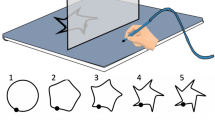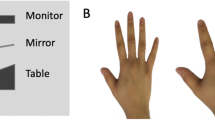Abstract
Although patients with sensory neuropathies and normal muscle power are rare, they have been extensively studied because they are a model for dissociating the sensory and motor components of movement. We have examined these patients to determine the cerebral functional anatomy of movement in the absence of proprioceptive input. In addition, the disabling symptoms of these patients can be substantially improved by visually monitoring their movements. We hypothesized that, during visually guided movements, these patients would show overactivity of regions specialized for visuomotor control with the possible additional involvement of areas that normally process somatosensory information. We used positron emission tomography (PET) and the tracer H2 15O to determine the functional anatomy of visually and non-visually guided finger movements in three patients with long-standing pan-sensory neuropathies and normal muscle power and six healthy controls. Five conditions were performed with the right hand: a sequential finger movement task under visual guidance, the same motor task without observation of the hand, monitoring a video of the same sequential finger movement, a passive visual task observing a reversing checkerboard, and an unconstrained rest condition. Data were analyzed using conventional subtraction techniques with a statistical threshold of z>2.33 with corrections for multiple comparisons. When compared with the control group, activation was not deficient in any brain areas of the patient cohort in any of the contrasts tested. In particular, in the non-visually guided movement task, in which meaningful visual and proprioceptive input was absent, the patient group activated primary motor, premotor, and cerebellar regions. This suggests that these areas are involved in motor processing independent of sensory input. In all conditions involving visual observation of hand movements, there was highly significant overactivity of the left parietal operculum (SII) and right parieto-occipital cortex (PO) in the patient group. Recent non-human primate studies have suggested that the PO region contains a visual representation of hand movements. Overactivity of this area and the activation of SII by visual input appear to indicate that compensatory overactivity of visual areas and cross-modal plasticity of somatosensory areas occur in deafferented patients. These processes may underlie their ability to compensate for their proprioceptive deficits.
Similar content being viewed by others
Author information
Authors and Affiliations
Additional information
Received: 18 May 1998 / Accepted: 18 January 1999
Rights and permissions
About this article
Cite this article
Weeks, R., Gerloff, C., Dalakas, M. et al. PET study of visually and non-visually guided finger movements in patients with severe pan-sensory neuropathies and healthy controls. Exp Brain Res 128, 291–302 (1999). https://doi.org/10.1007/s002210050849
Issue Date:
DOI: https://doi.org/10.1007/s002210050849




